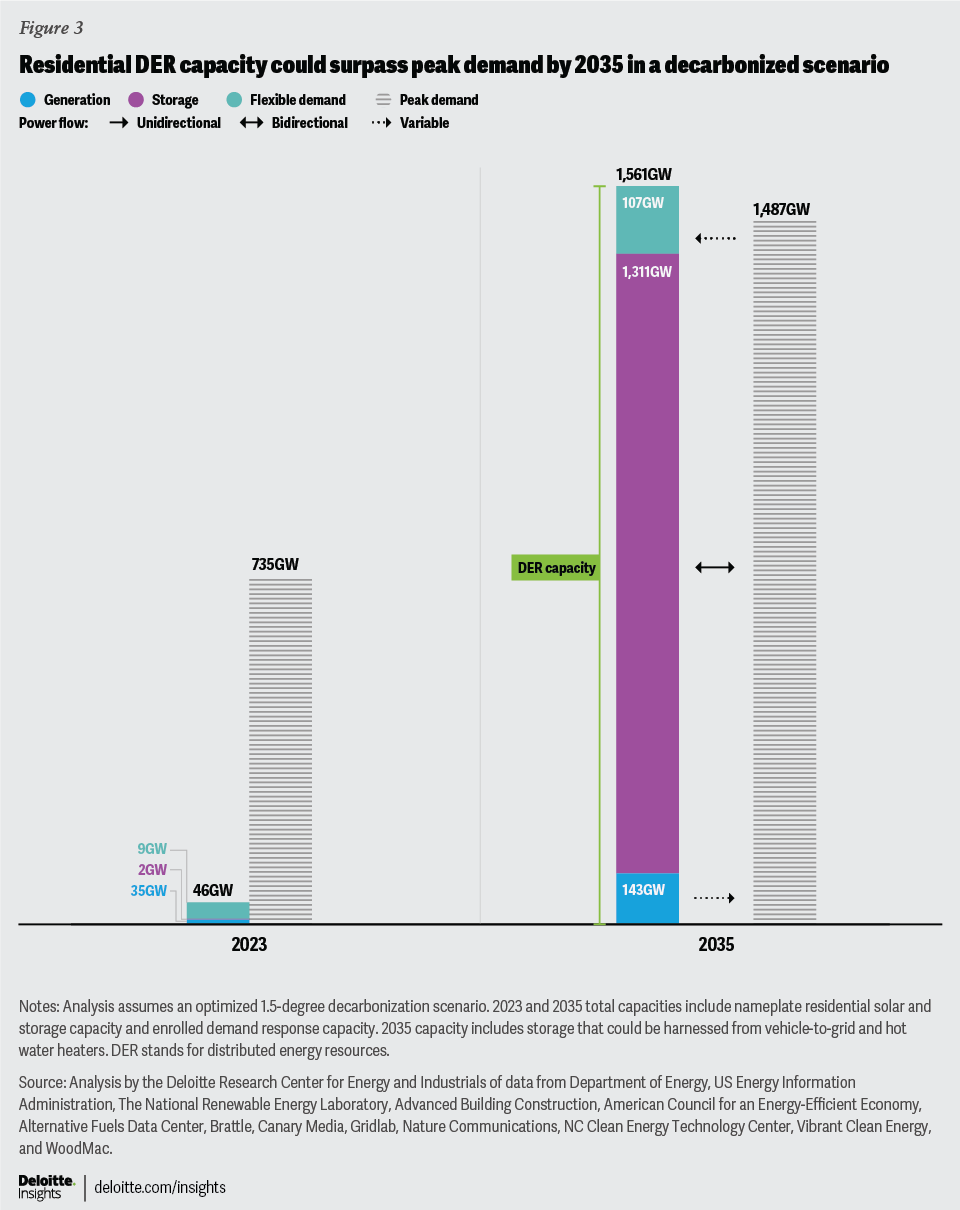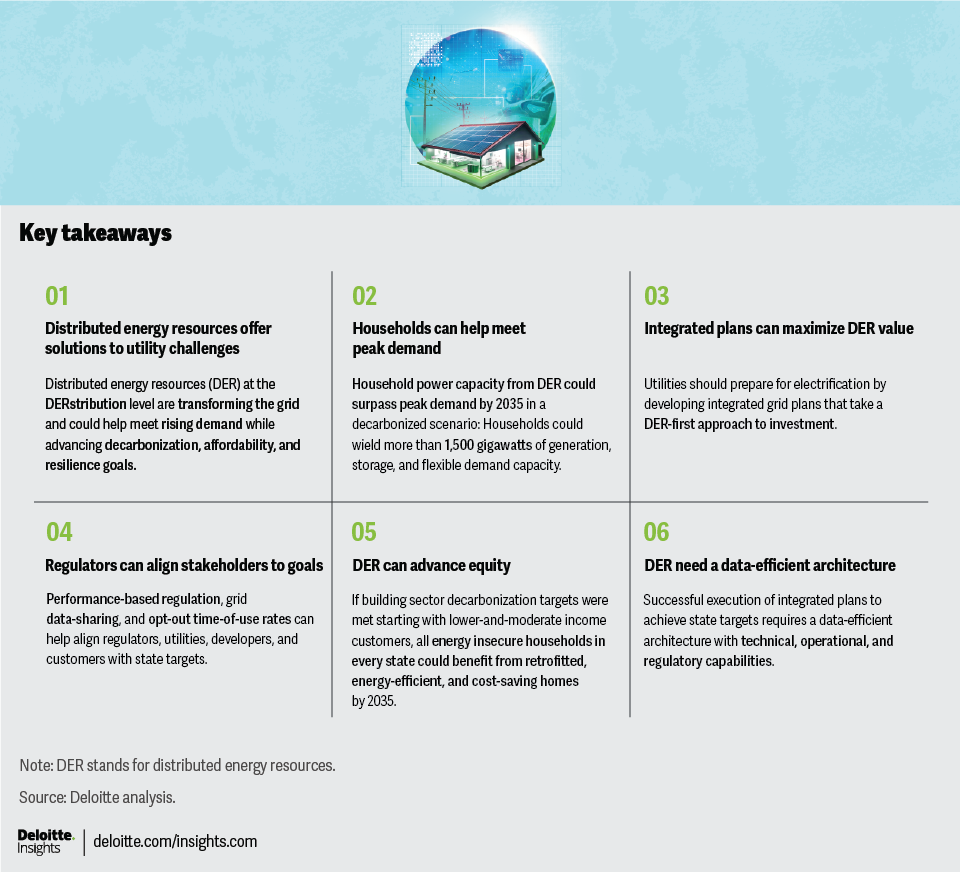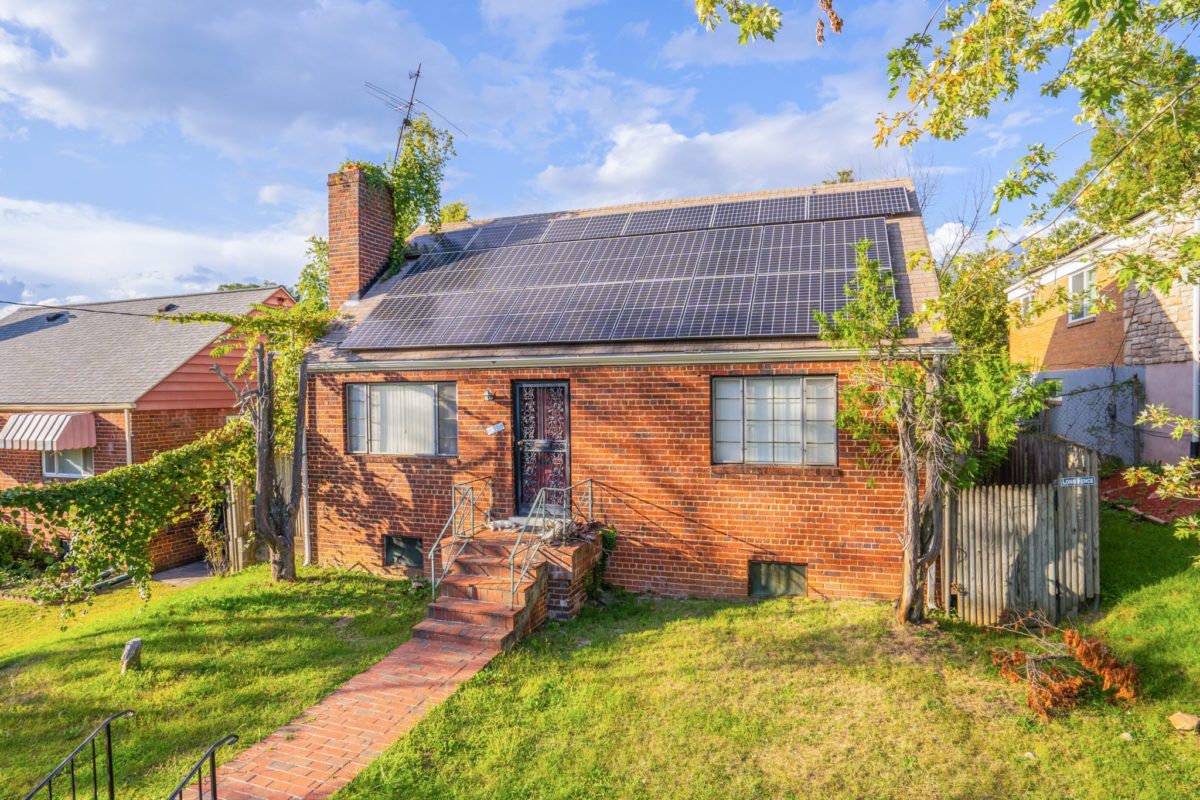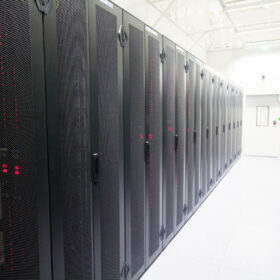As households are increasingly electrifying their appliances, heating and cooling systems, and shifting toward driving electric vehicles, electric utilities are faced with new challenges in serving demand while achieving decarbonization and maintaining customer affordability.
A report from Deloitte explains how distributed energy resources (DER) can meet these multiple challenges, filling a gap that centralized utility-scale power cannot accomplish as efficiently. DERs represent household electrical resources like home solar, batteries, electric vehicles, smart thermostats and smart appliances. When coordinated intelligently, DERs can reduce strain on the grid, cutting down on peak electricity demand requirements.
“If utilities successfully engage customers, they could harness DER to help meet peak demand with clean energy and provide essential grid services, while equitably sharing revenue and resilience benefits with households and placing downward pressure on rates,” said Deloitte.
Deloitte said household power capacity from DER could surpass total peak demand by 2035 in a decarbonized grid scenario. Households in the U.S. could wield more than 1,500 GW of generation, storage, and flexible demand capacity, said Deloitte.

This may prove important, as grid planners who had assumed flat demand for decades have increased projections in early 2023, ending the year by doubling their five-year load forecast to 4.7%. As utilities reassess demand from domestic manufacturers, artificial intelligence data centers, cryptocurrency miners, and green hydrogen producers, and transportation and building electrification, demand estimates continue to be revised upward. Achieving the Biden administration’s target for a fully decarbonized grid by 2035 with renewables could double peak demand to 1.4 terawatts by 2035, said the report.
Utility-scale renewables development is serving the bulk of this demand growth and replacing retired fossil fuel capacity. But issues with grid interconnection delays are mounting, pushing out projects or leading to cancellations.
“The bulk power system is constrained due to fossil fuel plant retirements and lengthy project timelines for new power plants to connect to limited transmission infrastructure, now stretching to five years,” said Deloitte. “In 2023, the backlog of mostly utility-scale renewables and storage awaiting grid interconnection grew to 2.6 terawatts—more than twice the current installed capacity.”
Particularly for serving peak demand needs, DERs may offer a more cost-friendly solution than current methods. Peak electricity demand typically occurs in summer afternoons and evenings when people come home from work and run their air conditioning and appliances. Peak demand is typically served by fossil-fueled peaker plants that are idle most of the time but built to ensure utilities have enough capacity to quickly start up when electricity demand spikes. For grid-scale renewables to serve peak demand, generation and storage build-out is required to be much larger because only a fraction of intermittent capacity counts toward resource adequacy requirements, and solar generation does not match the load profile of winter peaking systems.
Thus, flexible DERs at home, which can strategically lower power consumption or self-consume stored power at these times of peak demand, can help lower the amount of excess reserve capacity built on the grid.
“Studies commissioned by the states of California and New York show that managed electrification could lower the cost of distribution upgrades needed through 2035 by more than $30 billion in each of these states,” said Deloitte. “That’s because building efficiency measures and smart devices to manage energy usage and smooth EV charging could reduce capital spending on new substations, transformers, feeders, and other distribution equipment.”

There are regulatory, data, and stakeholder engagement challenges to getting an effective DER system up and running. The technology needed to unlock this great potential is already actively being installed, but a coordinated integration effort between regulators, utilities, installers, and homeowners will be required for the benefits to be realized. Deliotte offers a roadmap toward achieving DER buildout and integration in its report.
This content is protected by copyright and may not be reused. If you want to cooperate with us and would like to reuse some of our content, please contact: editors@pv-magazine.com.









By submitting this form you agree to pv magazine using your data for the purposes of publishing your comment.
Your personal data will only be disclosed or otherwise transmitted to third parties for the purposes of spam filtering or if this is necessary for technical maintenance of the website. Any other transfer to third parties will not take place unless this is justified on the basis of applicable data protection regulations or if pv magazine is legally obliged to do so.
You may revoke this consent at any time with effect for the future, in which case your personal data will be deleted immediately. Otherwise, your data will be deleted if pv magazine has processed your request or the purpose of data storage is fulfilled.
Further information on data privacy can be found in our Data Protection Policy.